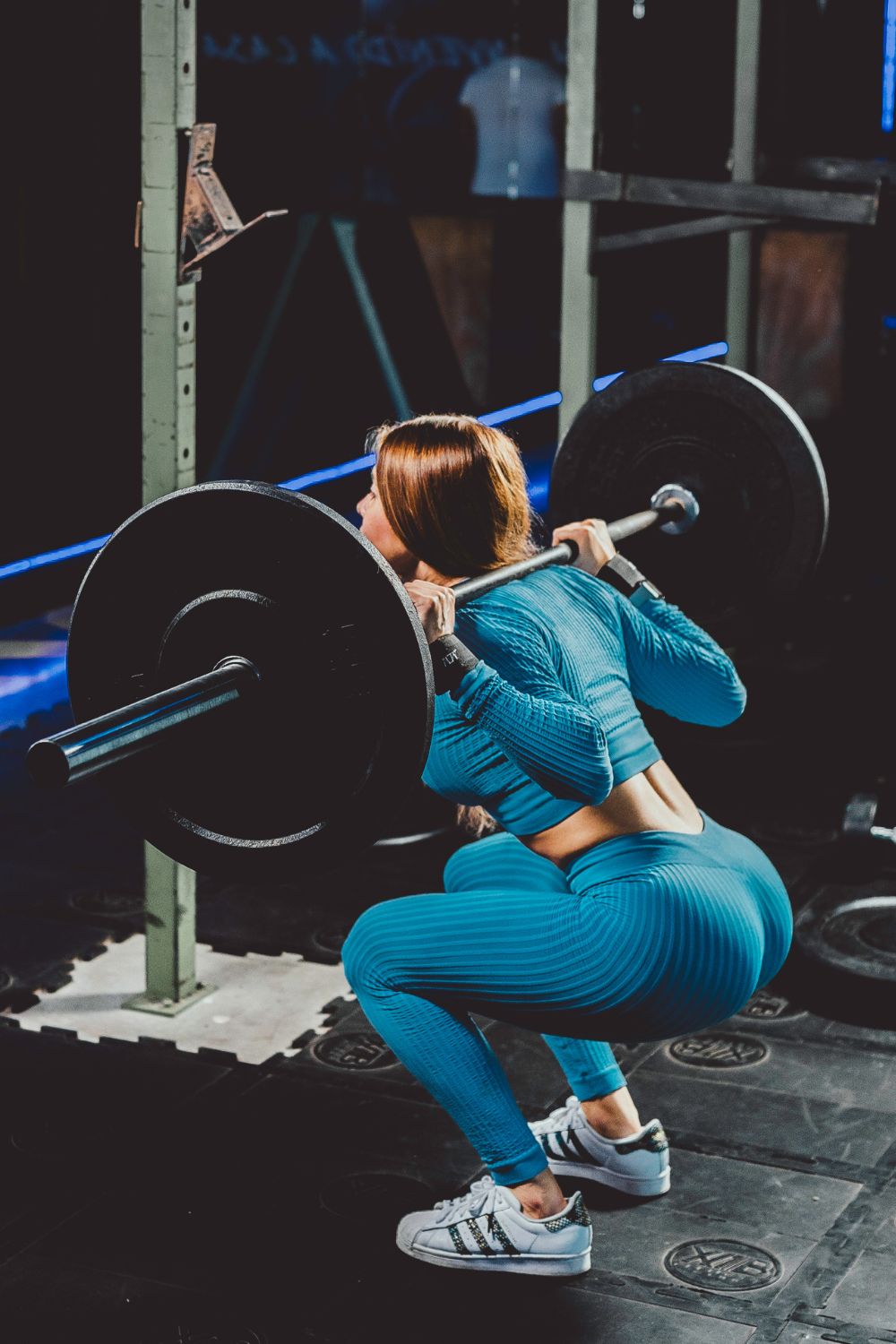Hey there, fitness enthusiasts! We’ve all been there those days when your squats just don’t feel as effective as they used to.
Maybe you’re not seeing the progress you expect, or perhaps you’re experiencing some discomfort or lack of motivation. But fear not! In this blog post, we’re diving into the secrets of making squats effective again.
Whether you’re a seasoned lifter or just starting your fitness journey, we’ve got you covered with tips and insights to revitalize your squat game.
Let’s uncover the keys to unlocking those gains and restoring the squat’s rightful place in your fitness routine. Ready to power up your squats? Let’s get started!
Unlocking the Power of Squats: How to Reignite Their Effectiveness When You’re Not Feeling It.
The effectiveness of squats in your workout routine can depend on several factors, and it’s essential to address the specific issues you’re facing to make them effective again.
Here are some common reasons why squats may not be feeling effective and how to address them:
Plateau in Progress: If you’ve been doing the same squat routine for a while, your body might have adapted to it, leading to a plateau in your progress.
To make squats effective again, consider changing your routine by varying the number of sets and repetitions, increasing the weight, or trying different squat variations like goblet squats, Bulgarian split squats, or front squats.
Improper Form: Proper form is crucial for squat effectiveness and safety. If your form has deteriorated, you may not be targeting the right muscles.
Review your squat form with a fitness professional or use mirrors and video recordings to ensure you’re performing squats correctly.
Insufficient Weight: Squats can become less effective if the weight you’re using is too light for your current strength level.
Gradually increase the weight to challenge your muscles adequately. However, ensure that you maintain proper form even with heavier weights.
Overtraining: Overtraining can lead to decreased effectiveness in any exercise, including squats.
Make sure you’re giving your muscles enough time to recover between squat sessions and incorporating rest days into your workout routine.
Inadequate Nutrition: Your diet plays a significant role in the effectiveness of your workouts.
Ensure you’re consuming enough calories, protein, and other nutrients to support muscle growth and recovery.
Dehydration can also affect your performance, so stay hydrated.
Lack of Variation: Doing the same exercise repeatedly can lead to boredom and reduced motivation.
Incorporate other leg exercises and overall workout variety to keep things interesting and challenging.

Injury or Pain: If you’re experiencing pain or discomfort during squats, it’s essential to address it promptly.
Consult with a healthcare professional or physical therapist to determine the cause and get guidance on how to modify your workouts while you recover.
Inadequate Warm-up: Proper warm-up is essential to prepare your muscles and joints for squats. Spend sufficient time warming up, including dynamic stretches and mobility exercises to enhance the effectiveness of your squats.
Inconsistent Training: Consistency is key to seeing progress in any exercise. Make sure you’re sticking to a regular workout schedule and not skipping squat sessions.
Set Realistic Goals: Sometimes, people may not feel the effectiveness of squats because they have unrealistic expectations. Set achievable goals and track your progress to stay motivated.
Remember that everyone’s body is different, and what works for one person may not work for another.
It’s essential to listen to your body, adjust your training accordingly, and seek guidance from a fitness professional if you’re unsure about your squat routine’s effectiveness.
Further explanations here.
Let’s delve deeper into these aspects to provide a more detailed explanation:
Plateau in Progress:
When you’ve been doing the same squat routine for an extended period, your body adapts to the stress, and this adaptation can lead to a plateau in progress.
To overcome this, it’s crucial to introduce variations into your squat routine. Here’s a breakdown of some effective methods:
Vary Sets and Repetitions: Instead of sticking to a fixed set and rep scheme, you can change it up. For example, you might do high-repetition sets with lighter weights to focus on muscular endurance, or lower-repetition sets with heavier weights to target strength gains.
Progressive Overload: Gradually increase the weight you lift. This challenges your muscles and stimulates growth. A general guideline is to add a small amount of weight (e.g., 5-10 pounds) every few weeks, ensuring that you can still maintain proper form.
Try Different Squat Variations: Incorporate variations like goblet squats, Bulgarian split squats, or front squats into your routine. These variations engage different muscle groups and can break the monotony of traditional squats.
Improper Form:
Proper form is essential not only for effectiveness but also for safety during squats. If your form has deteriorated, it means you may not be targeting the intended muscles and could be at risk of injury. Here’s how to address this issue:
Consult a Professional: Consider working with a certified fitness trainer or physical therapist. They can assess your form and provide personalized feedback and corrections.
Use Mirrors and Video Recordings: If you’re training alone, set up mirrors or record your squats from different angles. Compare your form to instructional videos or resources online to identify areas for improvement.
Focus on Key Points: Pay attention to key form cues such as maintaining a neutral spine, keeping your knees in line with your toes, and engaging your core. Practice these aspects during your squats.
Insufficient Weight:
Using an appropriate amount of weight is crucial for challenging your muscles and making squats effective.
If the weight is too light, your muscles won’t be adequately stimulated. However, it’s vital to maintain proper form, even when increasing the weight:
Gradual Progression: When increasing the weight, do so gradually. Small increments ensure you can handle the additional load while maintaining good form.
The right weight should make your last few reps of each set challenging but still achievable with proper technique.
Mind-Muscle Connection: Focus on feeling the muscles you’re targeting during the squat. This connection can help ensure you’re using the right amount of weight to stimulate muscle growth.
Spotter or Safety Bars: If you’re concerned about lifting heavier weights, use a spotter or safety bars on a squat rack to provide added safety during your lifts.
let’s delve deeper into the importance of addressing overtraining, nutrition, and workout variation for the effectiveness of your squats:
Overtraining:
Overtraining occurs when you push your body too hard without allowing sufficient time for recovery. This can lead to decreased effectiveness in your workouts and potentially cause injuries. Here’s how to manage overtraining:
Rest and Recovery: Make sure to schedule rest days between your squat sessions to give your muscles time to repair and grow. Adequate sleep is also crucial for recovery.
Listen to Your Body: Pay attention to signs of overtraining, such as persistent fatigue, soreness, decreased performance, or mood changes. If you notice these symptoms, consider reducing the intensity or frequency of your squat workouts.
Inadequate Nutrition:
Your diet plays a crucial role in the effectiveness of your workouts, including squats. Here’s how to ensure you’re fueling your body properly:
Caloric Intake: Ensure you’re consuming enough calories to support your energy expenditure, especially if you’re doing intense workouts. A caloric deficit can lead to reduced strength and muscle gains.
Protein: Protein is essential for muscle repair and growth. Include a source of protein in your meals, such as lean meats, poultry, fish, tofu, or plant-based options like beans and legumes.
Carbohydrates: Carbohydrates provide energy for your workouts. Include complex carbohydrates like whole grains, fruits, and vegetables in your diet to sustain your squat performance.
Hydration: Dehydration can lead to reduced strength and endurance. Drink enough water throughout the day, and consider consuming an electrolyte drink if you’re sweating heavily during workouts.
Lack of Variation:
Doing the same exercise repeatedly can lead to boredom and decreased motivation. To keep your workouts interesting and challenging while still targeting your leg muscles effectively, consider these strategies:
Alternate Leg Exercises: Alongside squats, incorporate other leg exercises into your routine, such as lunges, deadlifts, leg presses, or step-ups. This variety not only keeps things fresh but also works different muscle groups.
Periodization: Implement a training program with structured phases, such as strength, hypertrophy, and endurance. Each phase can include different exercises and rep schemes, providing variety while focusing on specific fitness goals.
Cross-Training: Include activities like cycling, swimming, or yoga in your routine to give your legs a break from squatting while maintaining overall fitness.
By addressing overtraining, maintaining proper nutrition, and introducing workout variation, you can enhance the effectiveness of your squat routine, prevent burnout, and continue making progress in your fitness journey.
Remember that a well-rounded approach to training and recovery is key to long-term success.
Let’s dive deeper into the importance of addressing injury or pain, the significance of proper warm-up, the role of consistency in training, and setting realistic goals for squat effectiveness:
Injury or Pain:
Pain or discomfort during squats can be a significant barrier to effectiveness and may indicate an underlying issue. Here’s how to deal with it:
Consult a Healthcare Professional: If you experience persistent pain during squats, it’s crucial to consult a healthcare professional or physical therapist. They can assess your condition, identify the cause of the pain, and provide appropriate treatment and rehabilitation recommendations.
Modify Your Workouts: While recovering from an injury or dealing with discomfort, you may need to modify your squat routine. Your healthcare professional can guide you on how to perform squats or suggest alternative exercises that won’t exacerbate your condition.
Inadequate Warm-up:
Proper warm-up is vital for maximizing the effectiveness of your squats and reducing the risk of injury. Here’s how to improve your warm-up routine:

Dynamic Stretches: Incorporate dynamic stretches that target the muscles and joints you’ll be using during squats. These can include leg swings, hip circles, and bodyweight lunges to increase blood flow and flexibility.
Mobility Exercises: Perform mobility exercises that focus on improving joint range of motion, particularly in the hips, ankles, and knees. This will help you achieve better squat depth and form.
Gradual Intensity: Start your squat session with lighter weights or bodyweight squats to ease your muscles into the movement. As your body temperature and heart rate increase, your muscles become more receptive to the squatting motion.
Inconsistent Training:
Consistency is a key factor in making progress with squats and any exercise. Here’s how to maintain a consistent training schedule:
Set a Schedule: Plan your workouts in advance and schedule them into your weekly routine. Treat your training sessions as appointments you can’t miss.
Accountability: Find a training partner or join a fitness group to help you stay accountable. Knowing that someone is expecting you at the gym can be a strong motivator.
Progress Tracking: Keep a training log or use a fitness app to track your progress. Seeing improvements in strength and endurance over time can be a powerful incentive to stay consistent.
Set Realistic Goals:
Unrealistic expectations can lead to frustration and the feeling that squats are ineffective. Here’s how to set and achieve realistic goals:
Specific Goals: Define clear, specific goals for your squatting journey. These might include increasing your squat weight by a certain amount, achieving better squat form, or targeting a specific number of repetitions.
Progress Tracking: Continuously track your progress toward your goals. Celebrate small victories along the way, and don’t be discouraged by temporary setbacks.
Patience: Understand that progress takes time. Building strength and muscle doesn’t happen overnight. Be patient and persistent in your training.
Adapt Goals: If you encounter challenges or changes in circumstances, be willing to adapt your goals accordingly. Flexibility in your objectives can help you stay motivated and continue making progress.
Addressing injury or pain, improving your warm-up routine, maintaining consistency in your training, and setting realistic, achievable goals are essential elements to ensure the effectiveness of your squats while promoting long-term success and overall well-being.
A complete tabular on this topic here.
Here’s a complete tabular summary of when squats can become effective again, addressing various factors that may affect their effectiveness:
| Factor Affecting Squat Effectiveness | Explanation | How to Improve |
|---|---|---|
| Plateau in Progress | If progress has stalled, change your routine by varying sets, reps, or weights, or try different squat variations. | Introduce variety, increase weight gradually, and use progressive overload techniques. |
| Improper Form | Proper form is crucial for targeting the right muscles. Consult a fitness professional, use mirrors, or record your squats to ensure correct form. | Focus on form cues and get expert guidance if needed. |
| Insufficient Weight | If the weight is too light, your muscles won’t be challenged. Gradually increase the weight while maintaining proper form. | Add small increments to your weights, ensuring safe and controlled lifts. |
| Overtraining | Overtraining can decrease effectiveness. Allow muscles to recover with rest days and listen to your body for signs of fatigue. | Schedule regular rest days, prioritize sleep, and manage workout intensity. |
| Inadequate Nutrition | Proper nutrition supports muscle growth and recovery. Ensure sufficient calorie intake, protein, carbohydrates, and hydration. | Consume a balanced diet and stay hydrated to fuel your workouts. |
| Lack of Variation | Doing the same exercise repeatedly can lead to boredom. Incorporate different leg exercises and workout variety to keep motivation high. | Alternate squat variations and include cross-training to prevent monotony. |
| Injury or Pain | Address pain or discomfort promptly. Consult a healthcare professional for diagnosis and guidance on modifying your workouts. | Seek medical advice, modify your routine, and focus on safe, pain-free movements. |
| Inadequate Warm-up | Proper warm-up prepares your body for squats. Include dynamic stretches and mobility exercises in your warm-up routine. | Spend time on dynamic stretching and mobility exercises to enhance performance and reduce the risk of injury. |
| Inconsistent Training | Consistency is essential for progress. Schedule workouts, find an accountability partner, and track your training progress. | Set a regular workout schedule and adjust as needed to ensure consistent training. |
| Set Realistic Goals | Unrealistic expectations can lead to disappointment. Set specific, achievable goals and track your progress. | Define clear goals, celebrate milestones, and adapt goals if necessary. |
By addressing these factors, you can reinvigorate the effectiveness of your squats and continue to make progress in your fitness journey.
My conclusion: When will squats be effective again?
To make squats effective again, focus on the following key points:
- Variation: Change your squat routine by adjusting sets, reps, weights, or trying different squat variations to break plateaus.
- Form: Ensure proper form to target the right muscles and reduce the risk of injury. Seek expert guidance if necessary.
- Weight Progression: Gradually increase weight while maintaining good form to challenge your muscles effectively.
- Recovery: Allow adequate time for rest and recovery to prevent overtraining and fatigue.
- Nutrition: Maintain a balanced diet with sufficient calories, protein, and hydration to support muscle growth and recovery.
- Variety: Incorporate different leg exercises and overall workout variety to keep motivation high.
- Injury Management: Address pain or discomfort promptly with professional guidance and modify your routine accordingly.
- Warm-Up: Prioritize proper warm-up with dynamic stretches and mobility exercises to enhance squat performance.
- Consistency: Stick to a regular training schedule to see continuous progress.
- Realistic Goals: Set achievable, specific goals and track your progress to stay motivated and focused on improvement.
By implementing these strategies, you can enhance the effectiveness of your squats and get back on track toward your fitness goals.

Hey there, it’s Mike Rrsq, the Editor-in-Chief over at Jsquat.com, and I’m absolutely obsessed with all things squat fitness! I’ve been lucky enough to get some serious recognition for my work in this field. With a solid background in the fitness and wellness industry, I’ve been there right from the get-go, helping shape this website into what it is today.
You see, I’m not just the boss around here; I’m also a passionate contributor. I love sharing my insights through my articles, and trust me, they’re not your run-of-the-mill stuff. Each piece I write is a labor of love, filled with my expertise and real-world experience in the fitness universe. So, if you’re into fitness and looking for some inspiration, you’re in the right place!

